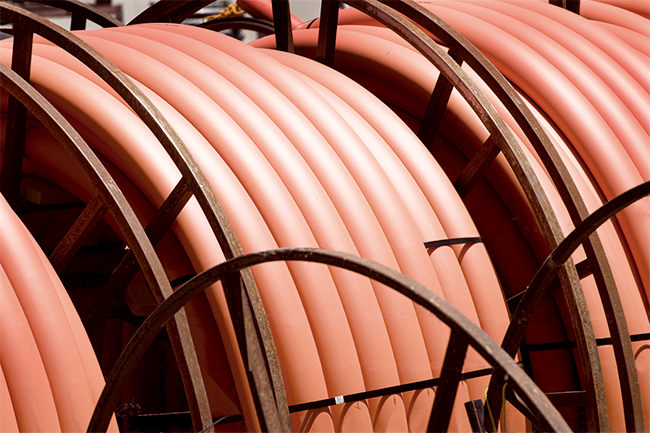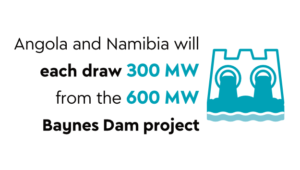A furious tech war is being fought in the suburbs of Africa. The battle over video-on-demand (VOD) is receiving the most attention, with ShowMax and Netflix slugging it out for market share.
In South Africa alone, analysts expect there will be close to 1 million active VOD user households by 2020. However, as the fierce VOD fight drives demand for faster, smoother internet access, a resulting second battle is being fought on the sidelines.
This struggle is over fibre-to-the-home (FTTH), with a growing number of start-ups – from middleweight players such as Dark Fibre Africa to regional providers including Safricom – taking on the continent’s telecoms giants in a race to take high-speed fibre connections into suburban homes.
‘FTTH is at the same stage that mobile was 20 years ago,’ says George Kalebaila, telecoms and digital media senior research manager at global market analysis firm IDC.
‘Therefore, we expect the strong growth to continue in the short to medium term before normalising around 2020.’
At present, the FTTH market is ‘a little fragmented’, according to Kalebaila, with smaller, regional players doing very well – at the expense of bigger, more established telecoms giants.
For example, in September last year, a high-speed, low-latency fibre link was established between the JSE and Teraco Data Centre in Isando, Johannesburg. Teraco CFO Jan Hnizdo said at the time: ‘The route – which spans 32 km – enables the Teraco community to provide capital market participants with solutions for high-bandwidth, low-latency connectivity.
‘In real terms, this link offers a sub-500 microsecond round trip and is a virtual extension of the JSE’s “meet me room” into Teraco.’
Some estimates state that one in five trades on the JSE are categorised as high frequency, where shares are bought and sold in a split second by computer algorithms, rather than by human investors. So this line – with its lightning-fast 1 gigabit connection and latency rate of just half a millisecond – is exactly what traders need. As if to prove Kalebaila’s point, the line was installed and is being maintained not by Telkom but by fibre-network provider Dark Fibre Africa.
In South Africa alone, analysts expect that there will be close to 1 million active VOD user households by 2020
That’s not to say Telkom isn’t hard at work in the fibre space. The 39% state-owned telecoms giant has South Africa’s largest fibre network, with 149 000 km of fibre providing access to 56 000 homes. Various company statements reveal that Telkom is planning to provide 500 000 homes with fibre by December 2016, and intends to have passed the 1 million mark by 2018.
The company began this year by migrating thousands of its ADSL customers to 10 Mbps (megabits per second) and 20 Mbps fibre lines as part of a two-month trial period. ‘Fibre is the next evolution of fixed-line broadband connectivity and we want our customers to enjoy the best technology experience we can offer,’ says Attila Vitai, Telkom’s consumer MD. ‘Not only does fibre offer faster speeds but it is less susceptible to electronic interference, lightning and water damage than the copper network.’
Telkom’s special offer, as generous as it was for its customers, was an obvious – and necessary – attempt to reclaim market share from relatively smaller players.
In the race to take fibre to the suburbs, Webafrica already provides fibre access to about 80 000 homes, while Metrofibre Networx – which in March made headlines when it sold an 18.14% stake to billionaire Patrice Motsepe’s African Rainbow Capital – recently invested ZAR8 million in expanding its FTTH infrastructure in Johannesburg’s northern suburbs.
These are just two of many small-scale companies that are laying and maintaining their own fibre networks. Safricom is another. According to the company’s owner Johan Kruger: ‘From the get-go we’ve built our own wireless infrastructure, and now we’re building our own fibre infrastructure. We don’t have anything from Telkom.’
The firm, which gets its infrastructure backbone from Neotel and Dark Fibre Africa, has a large footprint around the Potchefstroom area in South Africa’s North West province. ‘It’s a service area of about 50 km to 60 km around Potchefstroom, including places such as Carletonville, Westonaria, Fochville and Klerksdorp,’ says Kruger.
‘We have about 2 000 installations, with 1 800 being fixed-point wireless and about 200 being fibre-to-the-home and fibre-to-the-business [FTTB]. We’ve installed about 40 km of our own fibre in Potchefstroom, and on that network we serve homes, businesses and multi-family housing.’
Kruger has already noticed a shift in demand from residential FTTH to commercial FTTB ‘The demand is large. Everybody wants it,’ he says. Everybody, everywhere. Across Africa, demand for FTTH and FTTB is high – and for all the same reasons.
Liquid Telecom is investing more than US$35 million in laying Rwanda’s first 100 Mbps FTTH network, promoting the country as a digital hub for East and Central Africa. The company expects to offer FTTH to 15 000 homes in Kigali by the end of 2016, with plans to expand throughout the country and across borders into Burundi, DRC, Tanzania and Uganda.
As FTTH is rolled out, users will enjoy faster upload speeds, smoother Skype chats and cinema-quality, on-demand home television viewing
‘We are investing heavily so that Africans also enjoy the internet speeds and services that other parts of the world now take for granted,’ says Nic Rudnick, Liquid Telecom group CEO. ‘Our efforts are reducing reliance on slower last-mile connectivity solutions such as ADSL links, WiMAX and cellular services, which offer lower speeds, especially when congested.
‘We are making access to streamed, high-definition media, educational content, business tools and entertainment packages via the internet a reality for households and businesses of all sizes in Africa,’ he says.
For some African ISPs, an FTTH/FTTB roll-out means simply using their existing – and vastly underestimated – networks.
Safricom, for example, was established in 2006 as a wireless internet provider, and their FTTH roll-out is based on their existing wireless network.
‘I don’t think people realise how much wireless ISPs have done in the past 10 years,’ says Kruger, pointing to South Africa’s enormous independent network. ‘I can see it if I go outside our towns, to the farms that we’re servicing. One of our biggest clients is the South African National Defence Force, which has a lot of training bases and operational centres around Potchefstroom. They’ve never had access to ADSL but we’ve been able to provide that to them for many years now.’
The disadvantage of ADSL – and the relative advantage of fibre – lies in its name: asymmetric digital subscriber line. In practical terms, ‘asymmetric’ means upload speeds that are about one-tenth that of download speeds. That’s all well and good if you’re streaming a movie on ShowMax, but if you’re holding a conference call on Skype, it means a poor-quality video chat.
‘Fibre is more reliable and the big attraction is the upload speed,’ says Kruger. ‘The [FTTH] service we offer currently is symmetric. ADSL, your only alternative, has less than 1 megabyte upload speed but we have speeds of up to 100 megabits. With some businesses in Potchefstroom, we provide metro services at 1 gigabit speeds so that they can operate as if it’s all one office. No house can do that.’
Kruger adds that, over and above its speed advantages, FTTH is also more cost-effective than wireless or ADSL. ‘Most of our clients end up spending less,’ he says.
‘We’re able to go to a business and give them something much better, and they will end up saving between 20% and 30% on their service. In the current economic conditions, people are more than happy to save money and have something that works better.’
As FTTH is rolled out, users will enjoy faster upload speeds (at about 100 Mbps), smoother Skype chats (at about 20 MB per minute) and cinema-quality, on-demand home television viewing (at about 3 GB per hour). But someone has to pay for all those megabits, megabytes and gigabytes of data.
After the VOD and FTTH battles, the next instalment in the domestic digital war will soon hit homes across Africa. This time, it’ll be over the price – and distribution – of data.
















